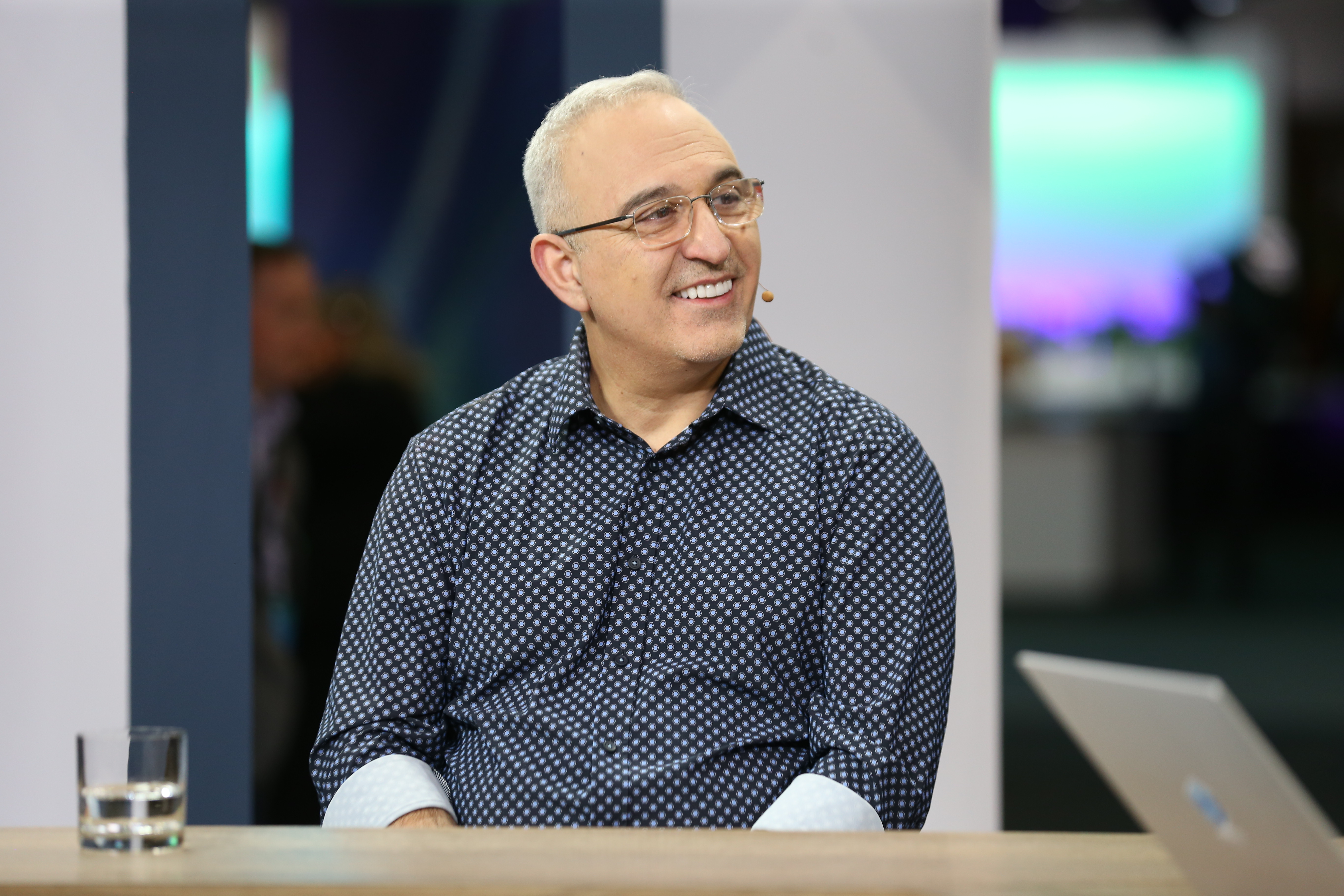 INFRA
INFRA
 INFRA
INFRA
 INFRA
INFRA
Shares of Hewlett Packard Enterprise Co. traded lower late today despite the company posting solid earnings and revenue that came in above Wall Street’s expectations.
It seems investors were much more interested in the company’s bottom line, and may have been perturbed by weaker-than-expected margins that suggest lower profits in its closely watched data center server business.
The enterprise technology company delivered a net profit for the third quarter of $512 million, up from a $464 million profit it posted one year earlier. Earnings before certain costs such as stock compensation came to 50 cents per share, above the 47-cent consensus view. Meanwhile, revenue was up 10%, to $7.7 billion, just ahead of the Street’s forecast of $7.6 billion.
HPE President and Chief Executive Antoni Neri (pictured) said the company delivered impressive revenue growth and improved profitability in the quarter. He added that he was particularly impressed with the company’s “AI system conversion.”
“These results reflect our momentum in delivering on our edge-to-cloud strategy across networking, hybrid cloud and AI,” he said. “We have driven meaningful innovation throughout our portfolio, which increases our relevancy with customers and positions us to continue to deliver profitable growth for shareholders.”
HPE said its AI server revenue hit a new company record, and it exited the quarter with around $3.4 billion in backlog.
Even so, HPE’s stock fell just over 2% in extended trading, after declining 1.5% during the regular session.
Analysts pointed to HPE’s adjusted gross margin of 31.8%, which was down from a year earlier and below the forecast of 33.4%, suggesting lower profits from its AI servers. According to HPE Chief Financial Officer Marie Myers, the decline was driven by a “higher mix of AI server revenue.”
HPE, along with rivals such as Dell Technologies Inc. and Super Micro Computer Inc., has benefitted from rising demand for high-powered servers featuring Nvidia Corp.’s graphics processing units, as businesses rush to snap up the computing infrastructure needed to power artificial intelligence workloads. In this business line, HPE generated $1.3 billion in revenue during the quarter, up 39% from the same period one year earlier.
However, investors have become concerned that AI servers come with lower profit margins for hardware makers, given the high costs of the powerful GPUs they contain. Neri attempted to allay these concerns during a conference call with analysts, saying the company expects it will send more higher-margin products and services alongside its AI servers over time.
Services could be profitable for HPE, as Neri recently told SiliconANGLE during its coverage of HPE Discover in June.
“Generative AI has the opportunity to transform the world again, but when it comes down to AI and particularly the customers we serve the most, they tell us, ‘It’s very complex. It’s very difficult. And, at the same time, it’s a huge investment,’” Neri said. “So, they need expertise, they need the simplicity of deployment and they need to prove the return on investment on that step that they’re taking.”
Woo Jin Ho, an analyst at Bloomberg Intelligence, wrote in a note to clients that “weak AI server margin has been a theme for the sector, tripping up Super Micro and Dell over the past couple of quarters.” He added that HPE’s soft margins “may overshadow its healthy AI sales momentum.”
One reason for the lower margins might be that the majority of HPE’s AI servers are sold to cloud services providers, who always buy in bulk and therefore get bigger discounts. However, Neri told analysts the company is seeing increasing momentum with governments and enterprises.
On the conference call, Myers said the company’s intention is to pursue profitable growth. “Obviously we have customers across the spectrum, including model-builders, sovereigns and enterprise AI,” she said. She added that she believes the company’s AI servers are “particularly well-suited to enterprise AI.”
During the quarter, HPE received a nice windfall of around $2.1 billion from the sale of its stake in H3C Technologies Co., a joint venture between HPE and its Chinese partner Unisplendour International Technology Co. The financial impact of that deal will be reflected in the current quarter, officials said.
Neri discussed the sale briefly on the call with analysts, saying that the cash would be used to finance the company’s acquisition of Juniper Networks Inc., which is set to close later this calendar year or in early 2025. That transaction was last month given full approval by EU regulators to go ahead, but the company still needs to win the approval of U.S. authorities, and also the U.K’s Competition and Markets Authority, which has reportedly opened an investigation into the deal.
Looking to the fourth quarter, HPE offered fairly tepid guidance, saying it expects earnings of between 52 and 57 cents on revenue of $8.1 billion to $8.4 billion. Wall Street is modeling earnings of 55 cents on sales of $8.2 billion.
HPE also raised its full-year guidance for earnings per share to a range of $1.92 to $1.97, up from its prior forecast of $1.85 to $1.95. Analysts are looking for full-year earnings of $1.92 per share.
Prior to today’s decline, HPE’s stock was up 11% in the year to date.
Support our mission to keep content open and free by engaging with theCUBE community. Join theCUBE’s Alumni Trust Network, where technology leaders connect, share intelligence and create opportunities.
Founded by tech visionaries John Furrier and Dave Vellante, SiliconANGLE Media has built a dynamic ecosystem of industry-leading digital media brands that reach 15+ million elite tech professionals. Our new proprietary theCUBE AI Video Cloud is breaking ground in audience interaction, leveraging theCUBEai.com neural network to help technology companies make data-driven decisions and stay at the forefront of industry conversations.